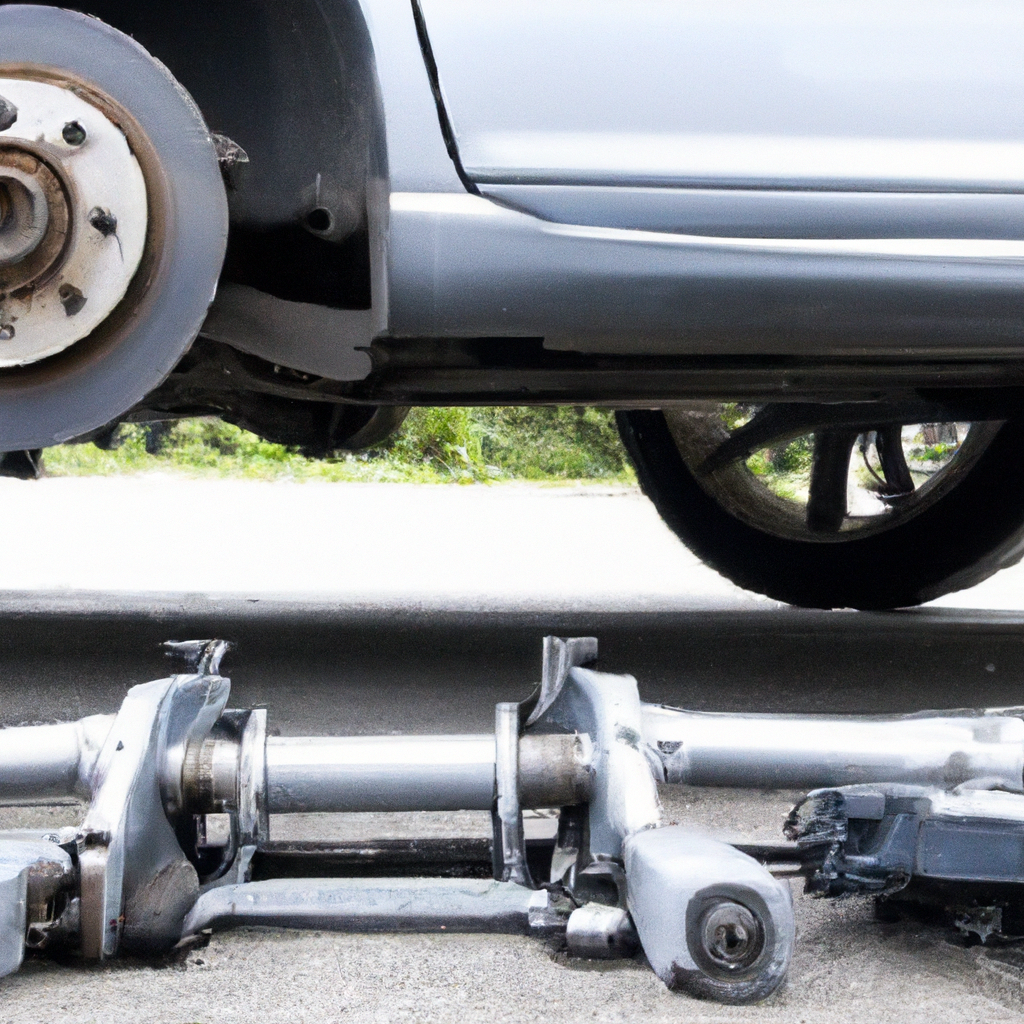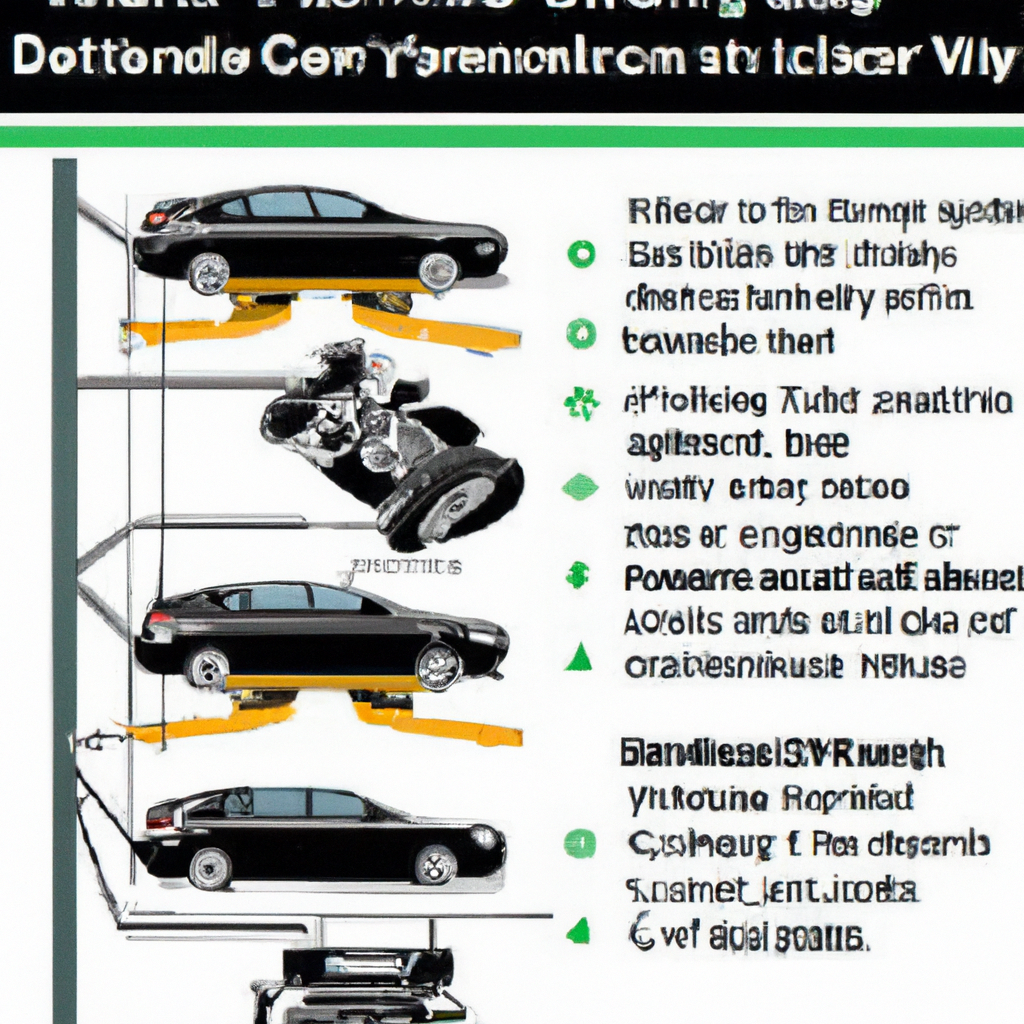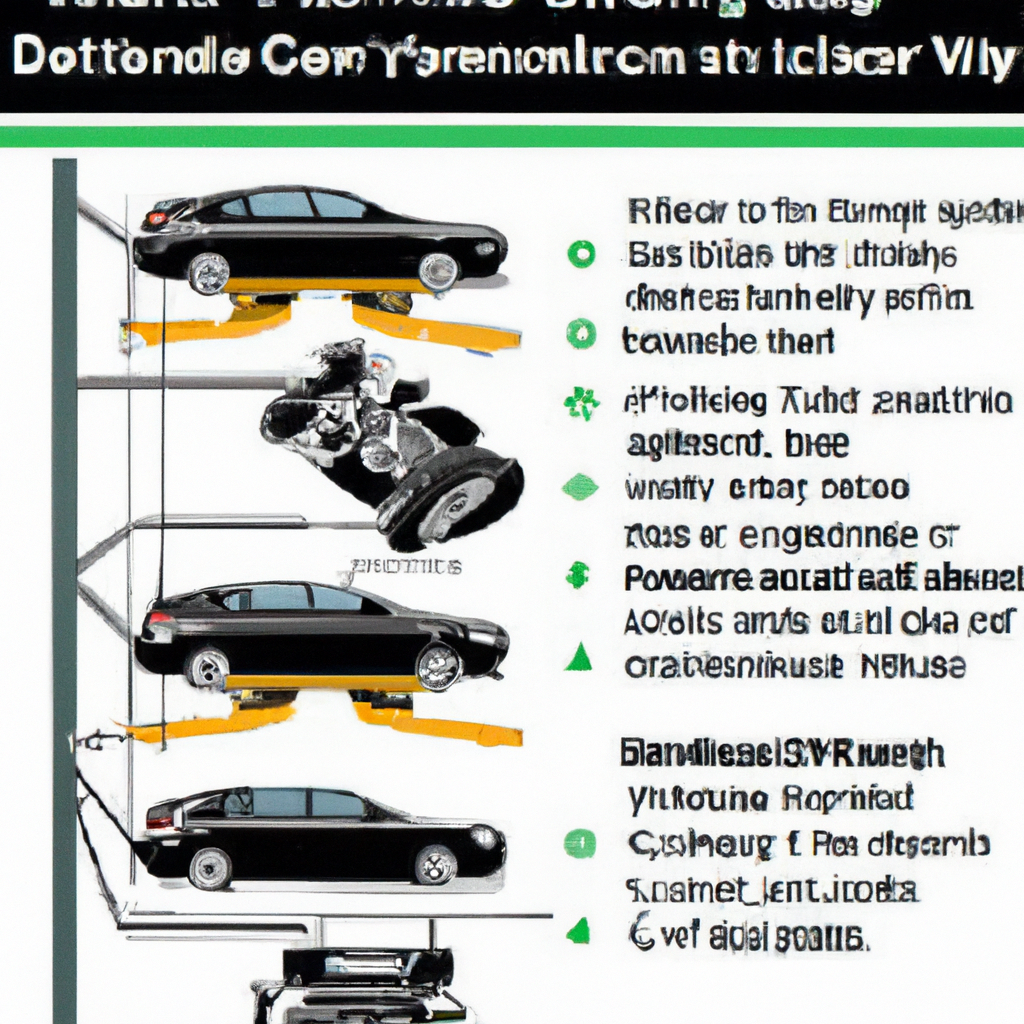When it comes to towing vehicles, the question often arises as to why all-wheel drive (AWD) cars cannot be towed in the same manner as their two-wheel drive counterparts. This article aims to shed light on this frequently misunderstood topic by explaining the crucial differences in mechanics and functioning between AWD and two-wheel drive vehicles. By understanding the intricacies behind towing AWD cars, you can ensure the safety and integrity of both the vehicle being towed and the towing process itself.
Why can’t AWD cars be towed?
Overview of AWD (All-Wheel Drive) Cars
Definition of AWD
All-Wheel Drive (AWD) refers to a vehicle drivetrain configuration where power is supplied to all four wheels simultaneously. Unlike traditional two-wheel drive systems, AWD vehicles provide an increased traction and control on various road conditions, making them popular choices for drivers seeking enhanced stability and safety.
How AWD works
AWD systems operate by engaging all four wheels to distribute torque and power from the engine. This is commonly achieved through the use of a center differential or a similar mechanism. The power delivery to each wheel is dynamic and can vary depending on the road conditions and the system’s design. By continuously monitoring the grip and traction of each wheel, AWD systems provide a balanced power distribution, ensuring optimal performance and stability.
Benefits of AWD
The use of AWD in cars offers numerous benefits to drivers. Firstly, it improves traction on slippery or uneven road surfaces, such as snow, ice, or gravel. This increased traction allows for better acceleration and handling, reducing the risk of wheel slippage and potential accidents. Additionally, AWD enhances the vehicle’s stability and cornering abilities, providing a smoother and more controlled driving experience. Moreover, AWD systems often work in conjunction with electronic stability control and traction control systems, further augmenting safety and preventing wheel spin in challenging road conditions.

Towing Challenges with AWD Cars
Though AWD systems offer remarkable advantages on the road, they present significant challenges when it comes to towing. These challenges arise from the complexities of the drivetrain and the potential for damage or misalignment.
Added Weight on the Drive Train
When towing an AWD vehicle, the added weight of the towed car can put excessive strain on the drive train. The components of the drive train, such as the transmission, axles, and differential, may not be designed to handle the additional load. This strain increases the risk of damage to these vital components.
Potential Damage to the AWD System
Towing an AWD car incorrectly can cause undue stress on the drivetrain components. The transfer case and differentials, which distribute power between the front and rear wheels, can go through unnecessary wear and tear or even sustain irreversible damage. This damage may compromise the functionality of the AWD system, leading to expensive repairs or replacements.
Risk of Causing Drivetrain Binding
Drivetrain binding occurs when the wheels of an AWD system experience different rotation speeds due to improper towing methods. This mismatch in rotation can strain the drivetrain and may cause severe damage. Since AWD systems work on the principle of actively distributing power to each wheel, any binding can adversely affect the overall performance and integrity of the system.
Difficulties with Flat Towing
Flat towing involves towing a vehicle with all four wheels on the ground. While this method is commonly used for certain types of vehicles, it is generally incompatible with AWD cars. The primary reason is that AWD systems rely on the free rotation of the wheels to distribute power effectively. Flat towing, on the other hand, locks the wheels in place, preventing them from rotating freely. This restriction can cause significant strain and damage to the drivetrain.
Added Weight on the Drivetrain
To fully understand the impact of added weight on an AWD car’s drivetrain, it is necessary to examine the components involved. The drivetrain comprises various interconnected parts that facilitate the transfer of power from the engine to the wheels. These parts include the transmission, transfer case, differentials, axles, and the driveshaft.
When a car is being towed, whether due to a breakdown or for other reasons, there is an additional load placed on the drivetrain. The weight of the towed vehicle, combined with the towing equipment, exerts a downward force on the drivetrain components.
The added weight on the drivetrain can result in increased stress and strain on these components, which may lead to premature wear or failure. Additionally, the drivetrain may not be designed to handle the specific load distribution experienced during towing, further exacerbating the risk of damage.

Potential Damage to the AWD System
Towing an AWD car without proper considerations can have detrimental effects on the AWD system itself. The AWD system relies on precise distribution of power to each wheel, ensuring optimal performance and stability. However, towing can disrupt this delicate balance, potentially causing damage to critical drivetrain components.
The stresses experienced during towing can cause excessive wear and tear on the transfer case and differentials. These components bear the brunt of the load distribution and torque during normal operation, and towing imposes additional strain. The transfer case, responsible for directing power to the front and rear wheels, and the differentials, which distribute power between the left and right wheels, can sustain damage beyond their intended capacity.
In some cases, the increased load on the AWD system, coupled with the absence of proper lubrication while the engine is not running, can lead to overheating and accelerated wear of these vital components. This can compromise the overall functionality of the AWD system and potentially render it ineffective.
Risk of Causing Drivetrain Binding
Drivetrain binding is a significant concern when it comes to towing AWD cars. It refers to the condition where the wheels of an AWD system rotate at different speeds or resist rotation altogether. This condition arises due to the mismatch in rotation between the front and rear wheels.
The complex design of AWD systems relies on the ability of the wheels to rotate freely and independently. This free rotation allows the drivetrain to distribute power among the wheels based on the demands of the road conditions. However, when an AWD car is towed incorrectly, such as when using improper equipment or techniques, the wheels may become bound, hindering their ability to rotate freely.
Drivetrain binding can cause significant damage to the drivetrain components. The increased resistance and strain can result in premature wear and tear on the axles, differentials, and other drivetrain parts. The consequences of drivetrain binding can extend beyond costly repairs, potentially compromising the overall drivability and safety of the vehicle.
Difficulties with Flat Towing
Flat towing, also known as four-wheel towing, involves towing a vehicle with all four wheels on the ground. This method is commonly used for certain types of vehicles and offers convenience for transportation. However, when it comes to AWD cars, flat towing poses significant challenges and risks.
The primary incompatibility between AWD systems and flat towing lies in the locking mechanism that prevents the wheels from rotating freely. AWD systems rely on the ability of the wheels to rotate independently, enabling the dynamic distribution of power. In a flat towing scenario, the wheels are locked in place, inhibiting their ability to rotate as intended.
Restricting the rotation of the AWD system’s wheels can place unnecessary stress on the drivetrain components, leading to potential damage or misalignment. The drivetrain may be subject to excessive strain, and vital components like the differentials and axles can suffer severe wear or failure.
Towing Recommendations for AWD Cars
Due to the inherent challenges and risks associated with towing AWD cars, it is crucial to follow specific recommendations to ensure the safety and integrity of both the vehicle being towed and the towing equipment.
Using a flatbed tow truck
One of the most recommended methods for towing AWD cars is using a flatbed tow truck. A flatbed tow truck lifts the entire vehicle, leaving all four wheels off the ground. This method eliminates the risk of drivetrain binding and avoids placing any stress on the AWD system’s components. Flatbed towing provides a secure and controlled means of transporting AWD cars, minimizing the potential for damage.
Using a trailer to lift all wheels
Another viable option for towing AWD cars is utilizing a trailer that can lift all the wheels off the ground. This method achieves a similar result as flatbed towing by ensuring there is no strain on the AWD system components. By lifting all the wheels, the drivetrain is effectively disengaged, preserving the integrity and functionality of the AWD system.
Professional assistance for towing AWD cars
Given the complexities and risks involved in towing AWD cars, it is highly recommended to seek professional assistance. Professional towing services or automotive professionals familiar with AWD systems can provide expert guidance and ensure the towing process is carried out correctly. Their expertise and specialized equipment can greatly minimize the chances of damage and drivetrain binding.
Manufacturer Guidelines on AWD Towing
To obtain accurate and vehicle-specific recommendations for towing an AWD car, it is essential to consult the manufacturer’s guidelines. The vehicle’s owner manual or the manufacturer’s website typically provide detailed information regarding towing procedures, weight restrictions, and specific considerations for AWD vehicles.
Consulting the manufacturer’s guidelines ensures that the towing process adheres to the vehicle’s specifications and limitations. By following these guidelines, drivers can mitigate the risks associated with towing AWD cars and help maintain the longevity and performance of both the vehicle and its AWD system.
Conclusion
While AWD cars offer impressive traction and stability on the roads, they present unique challenges when it comes to towing. The added weight, potential damage to the AWD system, risk of drivetrain binding, and the incompatibility with flat towing techniques all contribute to the complexities of safely transporting AWD cars.
To ensure the safety and integrity of AWD vehicles, it is vital to follow recommended towing practices, such as using a flatbed tow truck or a trailer that lifts all wheels. Seeking professional assistance and consulting the manufacturer’s guidelines for specific towing recommendations further enhances the towing process’s safety and effectiveness. By understanding and addressing the challenges associated with towing AWD cars, drivers can avoid costly repairs, potential accidents, and maintain the optimal functionality of their AWD systems.
